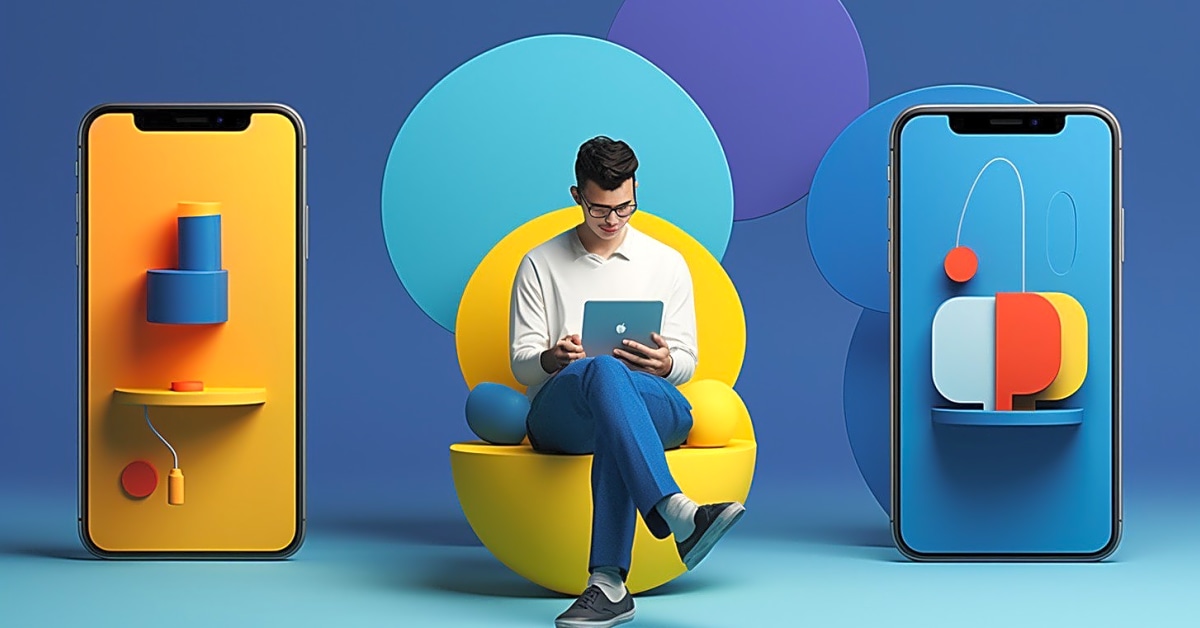In today’s digital world, it is essential for businesses to have a strong online presence. With the rise of mobile devices, having a responsive design for different devices has become more crucial than ever. This not only ensures a seamless user experience, but also maximizes operational leadership and efficiency. In this article, we will dive into the world of responsive design, exploring its importance and how it can benefit your business. Whether you are new to web design or looking to improve your existing site, this article is for you. Join us as we take a deep dive into the world of responsive design and learn how to create a visually appealing and functional website for all devices.
Responsive design is a method of designing websites that ensures they are easily accessible and user-friendly on any device, whether it be a desktop computer, tablet, or mobile phone. This means that no matter what device a person is using to access your website, they will have a positive experience.
To understand the importance of responsive design for operational leadership, it is essential to first understand the impact of mobile devices on internet usage. In 2019, 52.2% of all website traffic worldwide was generated through mobile phones. This means that more than half of your potential customers or clients are accessing your website through their phones. If your website is not optimized for these devices, you are missing out on a significant portion of your audience.
Furthermore, responsive design can greatly benefit team building and effective management. With remote work becoming increasingly popular, it is crucial to have a website that is easily accessible on any device. This allows team members to stay connected and informed, no matter where they are working from. It also ensures that all team members have equal access to important information and resources.
Responsive design also plays a key role in improving organizational efficiency and performance. A website that is optimized for all devices allows for easier navigation and faster loading times, which can lead to increased productivity and efficiency. It also ensures that important information and resources are easily accessible, reducing the time spent searching for them.
One of the main benefits of responsive design is its ability to improve problem solving and decision making. With a website that is easily accessible on any device, leaders can quickly access data and make informed decisions. This can be especially useful in fast-paced industries where quick decisions are necessary.
To illustrate the importance of responsive design, let’s look at an example. Company A has a website that is not optimized for mobile devices. When a potential customer tries to access their site on their phone, the text is too small to read, and the buttons are too close together, making it difficult to navigate. Frustrated, the customer leaves the site and turns to a competitor with a responsive website. Company A has just lost a potential customer due to their lack of responsive design.
In contrast, Company B has a responsive website. When a potential customer accesses their site on their phone, it is easy to navigate, and all the information is readily available. The customer has a positive experience and is more likely to engage with the company.
It is clear from this example that responsive design plays a crucial role in capturing and retaining customers or clients. By ensuring that your website is optimized for all devices, you are setting yourself up for success in operational leadership and team building.
Some may argue that responsive design is not necessary for all businesses, but with the increasing use of mobile devices and remote work, it is becoming more of a necessity than an option. By neglecting to implement responsive design, you are hindering your business’s growth and potential success.
In conclusion, responsive design is an essential aspect of web design that should not be overlooked. It not only benefits operational leadership and team building but also contributes to organizational efficiency and performance. By making your website easily accessible on all devices, you are setting yourself up for success in today’s digital age.
Improving Organizational Efficiency and Performance
Responsive design has become an increasingly important aspect of web design, especially with the rise of mobile devices. By implementing a responsive design, businesses can ensure that their website is optimized for all devices, providing a seamless user experience regardless of the device being used.
But beyond just improving the user experience, responsive design can also lead to increased productivity and better decision making within an organization. By having a website that is accessible and functional on all devices, employees can easily access important information and tools, no matter where they are or what device they are using. This allows for more efficient communication and collaboration, leading to improved organizational efficiency.
In addition, responsive design can also improve overall performance by providing a consistent and streamlined user experience. This can lead to faster load times, reduced bounce rates, and ultimately, a higher conversion rate. With a responsive design, businesses can ensure that their website is optimized for all devices, leading to better decision making and increased productivity.
Overall, responsive design plays a crucial role in improving organizational efficiency and performance. By providing a seamless user experience across all devices, businesses can see an increase in productivity and better decision making. As technology continues to advance, it’s important for businesses to prioritize responsive design in order to stay competitive and maximize operational leadership.
The Impact of Responsive Design on Operational Leadership
As technology continues to advance, it has become increasingly important for businesses to adapt and cater to different devices. This not only includes providing information to consumers, but also ensuring that internal processes and team communication are efficient and effective.
One crucial aspect of this adaptation is responsive design, which refers to designing a website or application in a way that allows it to adjust and function properly on various devices, such as laptops, tablets, and smartphones. This not only improves user experience, but also has a significant impact on operational leadership.
Responsive design allows managers and team leaders to access important information and communicate with their team members on the go. This means that they can stay connected and make decisions in real-time, leading to faster and more efficient operations.
Moreover, responsive design also promotes effective team building by enabling seamless collaboration and communication between team members. It allows for easy access to project updates, feedback, and other important information, regardless of the device being used.
By understanding the importance of responsive design for effective management and team building, businesses can stay ahead of the competition and maximize operational leadership and efficiency.
An Example of the Importance of Responsive Design
In today’s digital age, having a strong online presence is essential for any business looking to thrive and succeed. With the majority of customers using their devices to access information and make purchases, it is crucial for companies to have a website that is optimized for all devices.
This is where responsive design comes into play. By utilizing responsive design, businesses can ensure that their website is easily accessible and user-friendly on any device, whether it be a laptop, tablet, or smartphone.
But how does this impact customer retention? Let’s take a real-life example to better understand the importance of responsive design.
Imagine a customer trying to access a company’s website on their smartphone, but the site is not optimized for mobile devices. The text is too small to read, buttons are too close together, and the overall experience is frustrating. This customer may become frustrated and leave the site, potentially losing interest in the company altogether.
Now, imagine if the same customer accessed the website on their smartphone, but this time the site was responsive and easily navigable. They are able to find the information they need quickly and effortlessly. This positive experience may lead to increased engagement and a higher likelihood of returning to the site in the future.
This example highlights the importance of responsive design in retaining customers. By providing a seamless and user-friendly experience on all devices, businesses can keep customers engaged and interested in their products or services.
The Role of Responsive Design in Problem Solving and Decision Making
Responsive design is a crucial aspect of modern web development. With the increasing use of various devices to access information, it is essential for businesses to have a website that is easily accessible and usable on any device. This not only ensures a better user experience but also plays a significant role in problem solving and decision making.
Having a responsive website means that the layout and content of the site adjust automatically to fit the screen size of the device being used. This eliminates the need for users to constantly zoom in and out or scroll horizontally, making it easier and more efficient for them to access information.
When it comes to problem solving and decision making, having a responsive website can be extremely beneficial. In today’s fast-paced business world, decisions need to be made quickly and efficiently. With a responsive website, managers and leaders can access important data and information from any device, at any time. This allows for better decision making and problem solving on the go, without having to be tied down to a desktop computer.
Moreover, a responsive website can also improve team collaboration and communication. With everyone having access to the same information on their devices, it becomes easier for team members to work together and make decisions collectively.
Responsive design not only benefits businesses internally but also externally. A responsive website can attract more customers as it provides a seamless and user-friendly experience, regardless of the device they are using.
In conclusion, responsive design is an essential aspect of modern web development, especially in the context of problem solving and decision making. It allows for better accessibility, collaboration, and decision making, ultimately leading to improved operational leadership and efficiency.
In today’s digital age, responsive design is crucial for businesses looking to succeed in operational leadership and team building. By optimizing your website for all devices, you are not only improving the user experience but also setting yourself up for success in improving organizational efficiency and performance. Don’t neglect the importance of responsive design for your business’s growth and success.







